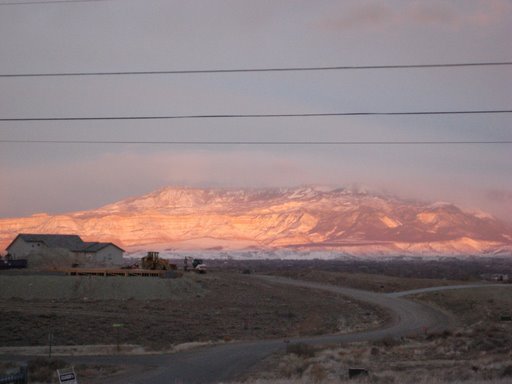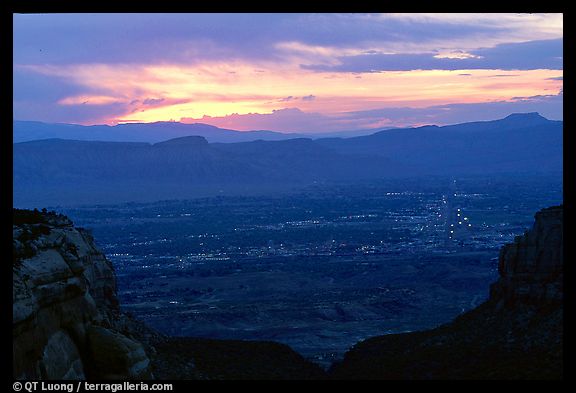Xcel says it’s close to meeting Colorado target for renewable energy
Denver Business Journal - by Cathy Proctor
Date: Thursday, May 12, 2011, 2:13pm MDT
Related:Environment, Energy
Xcel Energy Inc. believes it will substantially meet Colorado's year-old mandate of having 30 percent of its electricity come from renewable sources by the middle of 2012, eight years ahead of the 2020 deadline.
And that could mean a slowing of Xcel’s rush to build large wind and solar farms in the state, or buy power from such farms, in order to meet the mandate.
“It will probably put a damper on wind project development activity in Colorado, but probably not a complete stop because Colorado has a good wind resource,” said Steve Dayney, CEO of REpower USA Corp., a German wind turbine manufacturer which has its U.S. headquarters in Denver.
Minneapolis-based Xcel (NYSE: XEL) — Colorado’s largest utility, serving 1.3 million customers in the state — may still add renewable energy resources to its power portfolio in the form of new wind or solar power farms in the years ahead.
But such additions will be driven by questions of cost-effectiveness, or new rules made by Congress or the U.S. Environmental Protection Agency (EPA) designed to curb carbon dioxide emissions, and not by the need to hit a state-mandated target, said Robin Kittel, Xcel’s director of regulatory and policy analysis.
“We have what we need for renewable resources, but we’re not in a static world,” Kittel said. “If Congress was to enact carbon legislation, or the EPA to exercise its authority to regulate carbon, it becomes a larger picture than just a compliance picture with a state goal.
“Also, there are supply-and-demand components — such as if there’s an oversupply of wind turbines in the marketplace, or solar panels, such that the cost of the systems are very cost-effective. It’s too dynamic out there to call it one way or another,” she said.
On Friday, Xcel will file a “Renewable Energy Standard Compliance Plan” with the Colorado Public Utilities Commission. The proposal will detail how Xcel plans to meet the state’s 30 percent standard during the next 10 years. The utility will ask approval only for actions its planning in 2012 and 2013.
That plan will detail Xcel’s progress toward meeting the 30 percent mandate. And it could signal a slowdown in its effort to support more wind and solar development projects here.
“There may be projects under development [whose power] will be sold into other regions. But the big fish in this pond, in Colorado, is Public Service Company [Xcel’s Colorado arm],” REpower’s Dayney said.
Or, state officials could look at raising the 30 percent standard, said Ron Lehr, a Denver-based consultant for the American Wind Energy Association, based in Washington, D.C.
“If they think they’re done at 30 percent, then it’s time to go to 40 percent,” Lehr said. “It’s a minimum standard, you’re encouraged by law to go beyond the standard.”
Xcel has built, or bought power, from several wind and solar farms in Colorado in recent years.
At the end of 2010, Colorado had 1,252 megawatts of wind power in operation, up from 32 megawatts in 2000. All but 60 megawatts of the 1,252 total are used by Xcel and its customers.
Two more wind farms, each with 250 megawatts of capacity, will start operations this year — with all the power going to Xcel, according to Craig Cox, the executive director of Interwest Energy Alliance, based in Lakewood, which represents wind energy companies.
“I’ve been very pleased with Xcel’s proactivity in renewable energy development,” Cox said. “Xcel is one of the leading renewable energy utilities. I believe they can and should continue to do more.”
Xcel also gets 27.2 megawatts of solar power from two existing solar plants in the San Luis Valley. The company will buy power from two additional large-scale solar power plants — each generating 30 megawatts — that will start operation by the middle of 2012.
And its Solar*Rewards rebate program has paid $178 million in rebates, through the end of 2010, to help pay for 75.9 megawatts of smaller solar power systems perched on residential rooftops or a customer’s property, according to the utility.
Colorado’s renewable energy standard mandates that Xcel get 30 percent of the power it sells to customers from renewable energy sources — such as wind or solar farms — by 2020.
The law, signed by then-Gov. Bill Ritter in 2010, measures progress toward the standard by the amount of “Renewable Energy Credits” or RECs the utility owns and spreads the RECs across three categories.
One REC corresponds to one megawatt of power generated from renewable energy for an hour. The law also adds a 0.25 credit for each REC generated in Colorado.
The 30 percent mandate means that in 2020, when Xcel expects to sell about 32.3 million megawatt-hours of power, Xcel will need to have:
• 8.7 million RECs in the first, biggest category — called “non-distributed generation,” which translates into large wind farms, Kittel said.
“We have more RECs than what we need for compliance in the non-distributed generation bucket,” she said.
That’s because Xcel can “bank” extra RECs — RECs the company owns over and above incremental targets leading up to the 30 percent by 2020 mandate — for up to five years and dip into the account as needed, she said.
• Xcel also needs 485,000 RECs in a second bucket, called “wholesale distributed generation,” or wind or solar farms generating 30 megawatts of power or less, Kittel said.
Xcel expects to have that amount of RECs by the middle of 2012, Kittel said.
A 30-megawatt solar power plant, built by Iberdrola Renewables Inc. in the San Luis Valley, is expected to start operation by the end of 2011. A second 30-megawatt power plant, built in the valley by Cogentrix Energy LLC, based in Charlotte, N.C., is expected to start operations by the middle of 2012. Xcel has signed contracts to buy all the power produced by the two solar plants.
• Xcel also needs another 485,000 RECs in a third bucket, called “retail distributed generation,” or solar power systems perched on rooftops or on a customer’s property.
Xcel believes it will be compliance for this category in the “near future,” Kittel said.
The utility expects it will need to acquire more RECs in the third category, via rebates for small-scale solar power systems through the Solar*Rewards program, for a few years. But Kittel said she didn’t know how long that would be.
“We’ll still need more in the long run but we don’t know how much,” Kittel said.
As for a 2 percent charge on each customer’s monthly bill, a charge intended to help pay for renewable energy resources, Kittel said that’s not likely to disappear quickly.
Xcel will file its next long-range resource plan, its forecast of energy needs and the power plants needed to satisfy that demand, in October.
And Xcel had advanced about $51.4 million into the renewable energy fund — over and above what the 2 percent charge collected from customers — as of January in order to pay for renewable energy. The company will be repaid that money via the 2 percent charge.
--------------------------------------------------------------------------------
Saturday, May 14, 2011
Subscribe to:
Post Comments (Atom)





No comments:
Post a Comment